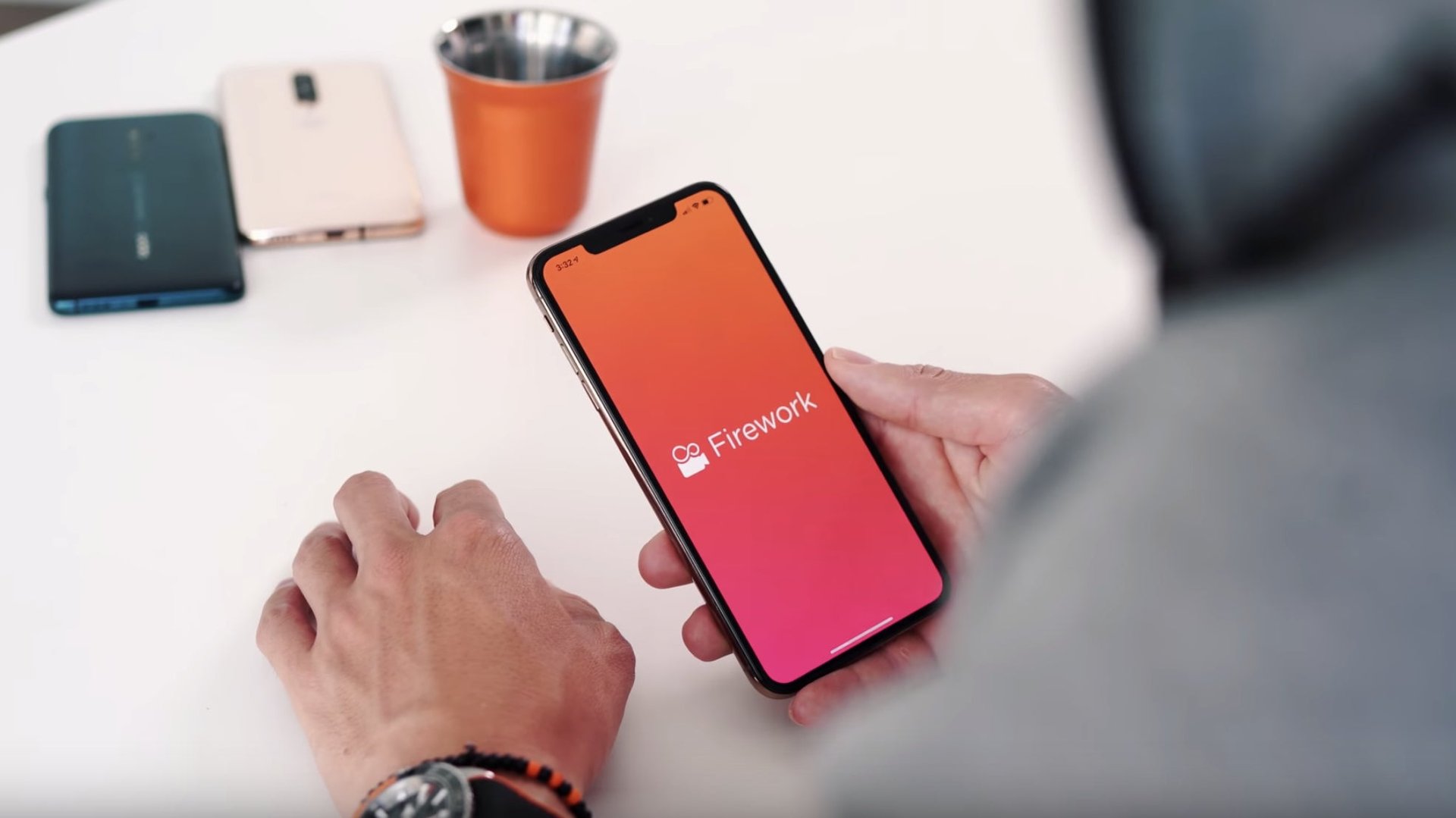US startups are already trying to displace TikTok
TikTok, the social video app, is reportedly undergoing a US national security review for censoring politically sensitive content. Depending on its outcome, the short-form video-sharing platform could risk losing its grip on the emerging medium which has proven popular among teenagers.


TikTok, the social video app, is reportedly undergoing a US national security review for censoring politically sensitive content. Depending on its outcome, the short-form video-sharing platform could risk losing its grip on the emerging medium which has proven popular among teenagers.
If TikTok falters, others could fill the void. Firework, a video-sharing startup based in Mountain View, California, is one company aiming to become part of the broader social media landscape. The app, which launched in September 2018, already has 3 million users (the majority of them in the US) and it’s growing quickly. CEO Vincent Yang told Quartz the app is adding about 500,000 users per month, primarily using influencer marketing rather than traditional ads. “We try to focus on our own organic growth and on the partnership side,” he said. Compared to TikTok which has spent nearly $1 billion on advertising in 2019 alone, Firework spends just a “few hundred bucks” on Facebook ads each day, Yang said.
In October, Google discussed acquiring Firework, the Wall Street Journal (paywall) reported. The app is currently valued at more than $100 million, but a deal could be made for much more. Weibo, a Chinese microblogging website, has also expressed interest. “I think in the next two months, we definitely will have some big thing to announce,” Yang told me. He said he’s been speaking with both venture and private equity firms. After all, short-video is a hot commodity. Last month, another TikTok competitor, Triller reportedly scored $28 million in venture funding. Based in San Francisco, the music-focused video app has 13 million users.

At first blush, Firework bears a strong resemblance to TikTok. Both surface content through finely-tuned algorithms. Rather than offer online communities where people pick who to follow (and often know their connections personally), the app puts users in front of a firehose of content, drawn from other users across the world. Based on a few identity markers—such as age, gender, interests, and region—Firework customizes a user’s feed. Then, the app learns from how its users browse to show more videos they might enjoy.
But a few important things separate Firework from TikTok: The length of its videos, its screen rotation feature known as “Reveal,” and the company’s (mostly) US roots.
Firework is not available in China
Due to “concerns over privacy, security, and freedom of speech,” Firework does not plan to launch in China, Yang said. It was a decision he made when he launched the company. “Because we don’t do business in China, I already lost a billion [potential users],” he said. “So, I have to find them elsewhere.”
While free expression was part of his rationale, it also turns out the market is extremely competitive. “In China, the short-video competition is already in the late game,” Yang observed. “The winner already came out. One is Douyin [the Chinese edition of TikTok]. Another is called Kuaishou,” which is backed by Tencent. By comparison, he noted, other markets—like the US, India, and Brazil—are still up for grabs. Firework recently hired a CEO for its India division, and the startup may soon invest $20 million or more to expand into the country.
When I asked Yang about Firework’s venture partners (who appeared to have Chinese roots), he clarified the situation. Contrary to earlier reports, the US division of Lightspeed Ventures invested in Firework. The same goes for IDG Capital, GSR Ventures, and ChinaRock Capital Management, a hedge fund. All four are international but each possesses a China connection.
Lightspeed has offices in Menlo Park and Tel Aviv but also has partners in Beijing and Shanghai. IDG was founded in Boston but has an office in Beijing. Meanwhile, GSR and CRCM are both based in San Francisco but have offices in Beijing and Hangzhou respectively. As Chinese money pours into Silicon Valley, users may want to consider where it’s coming from, especially given the Chinese government’s wide influence.
While his backers have ties to China, Yang explained that he only dealt with their US entities. “I was particularly careful because the US-China relationship has been a little bit sensitive,” he said. “After we consulted lawyers, we were very, very careful to focus on US investors.” I also asked Yang about Firework’s servers (they’re Amazon’s) and he said, all are located in the US.
30-second videos hit a sweet spot
Yang sees Firework as the “short form of YouTube,” a phrase he repeated several times during our conversation. With up to 30 seconds to record, he says, creators can do more with their narratives compared to TikTok or other apps. He says Firework attracts more in-depth posts, and well, slightly fewer memes and dance crazes.
When I tested Firework, it felt like a close cousin of TikTok, but I noticed some clear differences. The best parts of the app are the ability to watch videos horizontally and the option to combine clips from your phone’s front and rear-facing cameras. This gives reaction videos an extra little kick. The feature doesn’t appear to be widely used yet, but stitching together both views is an intriguing new format.
That said, Firework has some obvious shortcomings. Whereas TikTok clearly displays the different sections of its app, Firework does not. Instead, it places the discover, inbox, and profile tabs at the top of the screen, without labels. And weirdly, when you rotate the screen horizontally, these tabs don’t rotate with it. In horizontal mode, Firework’s re-posting and sharing features become invisible but still function.
After using TikTok, I also found Firework’s lack of a home tab frustrating. On TikTok, I can tap “home” for a fresh video and it feels brand new or seemingly randomized. On Firework, I can only swipe, which feels limiting. In its effort to be sleek, Firework sacrifices some accessibility, something Snapchat struggled with for years. While TikTok makes soundtrack names visible by default, on Firework, you must pause a video and tap “view soundtrack,” a minor but notable inconvenience.
Perhaps the starkest difference, though, is in Firework’s social features. In large text, TikTok displays the number of “likes” and shares for each video. View count is available on Firework, but it’s not quite as prominent. A Firework user would arguably be less likely to share or repost content than the average TikTok user.
Of course, part of that might be by design. Yang said Firework is more of a media company than a social network. And that’s reflected in the proportion of users who create content for the platform.
About 40% of TikTok users create content, leading to a watered-down selection, he told Quartz. By comparison, just 15% of Firework’s users create content. On YouTube, he says, “Less than one percent of people create, [and] 99% of people watch.”
Reveal
Firework’s most unique feature is Reveal, which “allows content creators to combine horizontal and vertical video into one mobile recording,” rather like videos captured on Snap’s Spectacles. This means no more unsightly black bars on the side of videos, and it also gives moviemakers another creative tool.

While this alone might not make Firework worth $100 million, it’s the complete package that seems promising. The app is certainly still in its infancy (users create between 10,000 and 30,000 videos per day, a far cry from the 500 hours of video uploaded to YouTube every minute). Firework is also in a highly-competitive field, but its focus on substance and young professionals could make it a legitimate threat to TikTok. At the very least, it demonstrates the rising popularity of short video and gives users an option that’s not headquartered in China.
The next few months could prove tough sledding for TikTok, the viral app owned by ByteDance, a Chinese company. In light of the regulatory scrutiny from US policymakers, investors have cooled toward a prospective IPO. And because of ByteDance’s ties to Beijing (according to The Guardian, the company advances Chinese foreign policy through the app), the company might be forced to divest Musical.ly, a US company it acquired two years ago and merged with TikTok. Musical.ly, which won the hearts of millions making lip-sync videos, helped TikTok establish itself in the US market. Today, the app has approximately 27 million monthly active users in the US, 60% of whom are between the ages of 16 and 24.
While TikTok’s once-explosive growth has tailed off (apparently because of its reduced spending on Facebook ads), the company is still closing in on 1.5 billion downloads worldwide, a figure that puts it on par with more established social media platforms like Facebook and Instagram. But TikTok’s dominance could be as fleeting as its 15-second videos. There’s little to prevent startups from imitating its model—and competitors don’t carry the baggage of Beijing-based ownership or content moderation policies influenced by the Communist Party of China. Indeed, it’s enough to make you look at TikTok sideways.